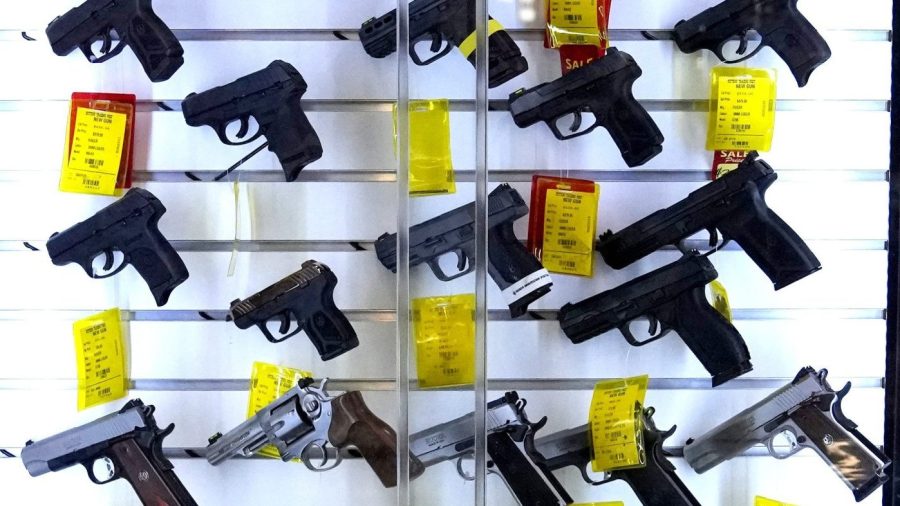
A three-member panel of the Fifth Circuit Court of Appeals ruled unanimously on Jan. 30 in the case of Reese v. ATF that the federal law barring the sale of handguns to those between the ages of 18 and 20 was unconstitutional.
Applying the Supreme Court’s spongy history-based standard for judging the constitutionality of modern gun laws based on the existence of similar old gun laws, a standard it set in its 2022 Bruen decision, the appeals court dismissed the government’s effort to defend the law as based on “scant evidence that eighteen-to-twenty-year-olds’ firearm rights during the founding-era were restricted in a similar manner to the contemporary federal handgun purchase ban.”
Most importantly, the conservative court relied on the fact that 18- to 20-year-old men were required by a 1792 federal law to serve in the militia (along with those up to the age of 45), saying that this age group “must be covered by the plain text of the Second Amendment, as they were compulsorily enrolled in the regiments that the Amendment was written to protect.”
But the court made three fundamental mistakes in its analysis.
First, it gave scant attention to the fact that those under 21 were universally understood at the time to be minors or “infants” (the legal term applied at the time to non-adults), who by definition were not entitled to adult rights. Only once did the court even mention the term “infant” in passing. Yet abundant founding-era and later legal sources confirm this understanding, such as 1790s legal treatises from Connecticut and Virginia, and standard legal works like James Kent’s foundational “Commentaries on American Law.”
Second, the court glided over the basic fact that militia service was an obligation, not a right. These are two different things. An obligation is something that one must do under law, as in to submit to military service under circumstances of a draft, for example. An obligation is, in the words of the 19th-century legal scholar Henry C. Black, “that which a person is bound to do or forebear; any duty imposed by law.” A right, on the other hand, is something one may do by one’s own judgment, or what Black called “powers of free action.” The one does not necessarily imply the other.
Military service is also profoundly different, because it occurs through a rigorous, closely supervised and coordinated system of hierarchical rank, order and discipline, especially with respect to every aspect of firearms in a military context. That was as true in the late 1700s as it is today. The right of civilian gun ownership involves no such detailed control.
Third, even assuming the relevance of militia service, the court missed the special age-based treatment of militiamen in the 1790s for those under 21. Yes, the federal Militia Act of 1792 enrolled those 18 and up, but because this law was scant on details about how the militia was to function, every state enacted enabling laws to put a system into operation. In the years to follow, all of the states made special provision for militiamen under 21, most of which relieved them of various requirements set out in the federal law, including that they obtain military-grade weapons on their own. That burden was placed on the parents or employers of those under 21.
For example, Delaware’s 1793 militia law said, “All young men under the age of twenty-one years … shall be exempted from furnishing the necessary arms, ammunition and accoutrements … and shall be exempted from militia duties and fines during such minority.”
Pennsylvania’s militia law from the 1790s similarly said, “All young men under the age of twenty-one years … shall be exempted from furnishing the necessary arms, ammunition and accoutrements … and shall be excepted from militia duties and fines during such minority or servitude.” The fact that parents or employers (and in a few instances local governments) bore the legal obligation to arm under-age militiamen confirmed their legal status as minors.
This latest decision underscores yet again the deficiencies of the Supreme Court’s history-based standard for judging modern gun laws, which lacks any useful definition for what constitutes similar or “analogous” old laws. Yet even if that matter could be resolved, lawyers and judges have been left with the job of conducting historical analysis — a task for which, as many observers have noted, they are ill-suited. Worse, the making of sound public policy is scarcely a consideration under the history-only Bruen standard — though maybe that’s the point.
Finally, let’s remember why handgun restrictions for minors exist. It has long been known that young people are more likely to commit crime, including violent crime. For example, while those between the ages of 18 and 20 compose less than 4 percent of the population, they are responsible for more than 15 percent of manslaughter arrests and homicides. A Department of Justice study of the period from 1980 to 2008 reported that those between 18 and 24 consistently had the highest rate of homicide. In 2019, according to FBI data, the age that committed the largest number of homicides was 19, followed by 18. In other words, there are sound and sensible reasons for restricting handgun access to minors.
The Supreme Court’s recent fealty to a history-only standard — one that it applies to virtually no other area of constitutional rights — fails not only as law but as a coherent lens for judging contemporary public policy. This case is yet another example.
Robert J. Spitzer is Distinguished Service Professor emeritus of political science at SUNY Cortland, and an adjunct professor at the College of William and Mary School of Law. He is the author of six books on gun policy, including “The Gun Dilemma” and the ninth edition of “The Politics of Gun Control.”












